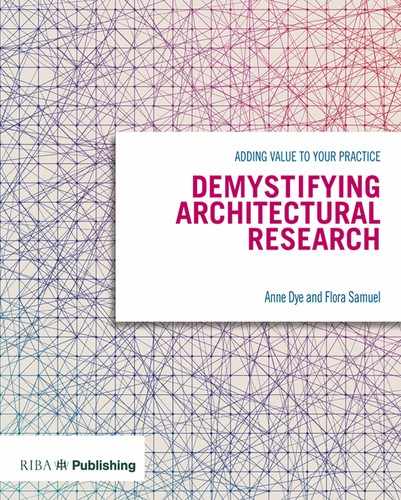Chapter 22
Marketing Architects
CONTRIBUTOR PROFILE: PAUL IDDON
Paul Iddon is UK Managing Director and co-founder of Agency Spring. He originally trained as an architect and practised for 19 years, co-founding two practices during the 1990s, including OMI Architects, Manchester. Since 2010 Paul has been developing brand and engagement strategies with architects and manufacturers. Paul is a council member of the Manchester Society of Architects and lectures regularly at universities across the UK.
The majority of architects in the Western world are experiencing unprecedented falls in fees, personal income and relevance. The realignment of the built environment value chain to focus on profitable and timely delivery models has favoured the growth of intermediate management and has displaced the traditional role of the architect as the contract supervisor/project manager/client agent. Decline in trust by clients and moves to eliminate risk have resulted in the growth of the novation of architects as subcontractors. The growth in new entrants to the building design ‘market’ and increase in replacement services have further undermined the core offering of the profession.
The current paradigm is not delivering value for the profession in terms of status and remuneration, except for the top 10 per cent who dominate the field, commonly referred to as ‘starchitects’. It is clear that a major re-alignment is taking place in the sector; the question that remains is what the future of the architect will be in the value chain.
Agency profile: Agency Spring
Agency Spring – an Anglo-Danish branding and communication agency – has 115 staff in four offices – Copenhagen, Aarhus, Manchester and Ho Chi Minh City. They work in both business-to-consumer (B2C) and business-to-business (B2B) categories, working across product and brand creation to digital and analogue communication strategy, and media. They work with blue chip international companies and with built environment companies such as Icopal, Grundfos, Danfoss, Cembrit and VELUX (DOVISTA).
The agency (with its associate companies) has been active in many areas of consumer research since 2010. More recently they have extended this expertise into specifier marketing research, including usage and attitude, qualitative and quantitative as well as online analytics. Much of their research is commissioned projects with clearly segmented user groups. However they also undertake their own projects – most recently with architects and other specifiers to develop life-stage and attitudinal segmentation models aimed at helping manufacturers understand the construction market in depth.
Context
My own particular experience and skillset led me to believe that an analysis would be feasible to research the possible options for the architectural profession using marketing, sales and business management techniques that do not currently form part of the architect’s arsenal.

The competitive context for architects
Approach
The starting point was to consider the architects as a ‘brand’ in the classic marketing definition and then apply models developed by industry leaders such as McKinsey & Company, Philip Kotler and David Aaker to develop a new positioning strategy that would form the basis for a ‘brand relaunch’. The ongoing project is to engage with actors in the value chain, in addition to architects themselves, to uncover insights that would be the foundation of the repositioning process.
Philosophy
Our starting point was the fundamental principle that architects are the most highly trained creative and strategic agents in the development of the built environment. By necessity an architect’s training is long, difficult and broad-based, and the field has become increasingly specialised and occupied by niche suppliers. Our positive approach was to find new relevance for the architect through better understanding of their current place in the value chain, and develop evidence to support a new positioning.
Methods
We have conducted research using a variety of classical and digital techniques to gather quantitative and qualitative data that can then be used to form a picture of the current status of the architect. Interviews and focus groups are also being undertaken to identify the need states of clients, consultants, contractors and end users that could then be analysed to develop insights into possible positioning strategies.
According to our background research this approach has not been explored in any detail as it is generally considered ‘difficult’ by classical marketers due to considerable levels of bias and preconception in the profession and its surrounding institutions. We took the view that it is a valid exercise nonetheless, with significant benefits should it shift perceptions and build value in the architect brand. There is no technical or academic reason why this approach should not work. Initially we undertook desk research to establish precedent in this area, as well as reviewing literature, such as works by Eric Cesal, Rory Hyde and Adrian Dobson. The following key issues were identified:
- Brand relevance
- Brand identity and positioning
- Built environment category analysis
- Skill levels in basic business in practice
- Teaching of basic business, sales and marketing skills in schools of architecture
- Attitudes of other actors in the built environment value chain
- Architect attitudes to professional standards, skills and support
- Relevance of professional bodies in practice realities
We are currently in the process of setting up digital platforms to further segment the architectural profession according to attitudinal and life- stage preferences.
In addition, live projects undertaken with several practices, two in London and two in Manchester, have revealed that there is a desire to both understand and apply marketing techniques. This has been extended to include basic sales techniques to leverage better fees and also avoid no-win pitch scenarios.
Insights and Impact
Our initial findings are that is it is extremely difficult to overcome inbuilt biases (as described by Kahneman)1 in several segments of the audience. This is particularly prevalent in the older segments as well as the younger market entrants. The most engaged segments tend to be those in practice who are looking for some way to leverage better value in their business life. This is unsurprising given the economic pressures on most practice owners.
A lack of basic business skills is caused by a complex set of factors, including:
- Design-driven education
- Professional status still being highly relevant to older segments
- Lack of connection between design and clearly defined client benefits
- Frustration at requirement for more knowledge and skills to operate in an already devalued market
- Business skills being perceived as ‘boring’ or even viewed with hostility
- Lack of perceived relevance in the everyday life of the architect
A basic grounding in such knowledge is a prerequisite for at least some of the profession to be able to successfully apply tools and techniques that will enable better business results. It is clear that much more work needs to be done to understand personal and psychological drivers of many architects at different levels of education and life stage, and with different preferences.
Lessons
There is much to be done, but there is a significant proportion of the profession that is looking for new ways to add value to their business and personal life.
A variety of tools and techniques can be developed to address the basic knowledge gaps in the professional, including undergraduate, postgraduate and in practice. These will need to be tailored to the experience of the particular audience. There is still a need to develop the language and approach to avoid alienating the audience in many cases.
Recent activity in USA shows that there is a hunger for a repositioning of the architect ‘brand’; indeed the AIA is undertaking a mass-media campaign on exactly this subject to the value of approximately $1.5 million.
